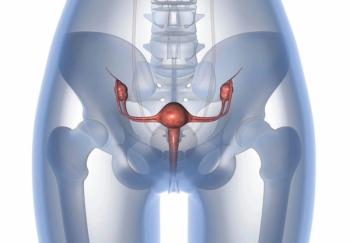
Oncology NEWS International
- Oncology NEWS International Vol 9 No 2
- Volume 9
- Issue 2
Cytoreductive Surgery May Improve Survival in Ovarian Cancer
BUFFALO, NY-Survival in patients with ovarian cancer by stage is similar to that of other cancers, William Hoskins, MD, said at the Surgical Oncology Symposium, hosted by Roswell Park Cancer Institute. “However, the vast majority of women are diagnosed with advanced disease, and there are no screening methods available to change this truth. Until screening methods improve, the surgical treatment offered these women is critical to their survival,” said Dr. Hoskins, chief, Gynecology Service, Memorial Sloan-Kettering Cancer Center.
BUFFALO, NYSurvival in patients with ovarian cancer by stage is similar to that of other cancers, William Hoskins, MD, said at the Surgical Oncology Symposium, hosted by Roswell Park Cancer Institute. However, the vast majority of women are diagnosed with advanced disease, and there are no screening methods available to change this truth. Until screening methods improve, the surgical treatment offered these women is critical to their survival, said Dr. Hoskins, chief, Gynecology Service, Memorial Sloan-Kettering Cancer Center.
Women are offered cytoreductive surgery to decrease the primary tumor volume and increase the sensitivity of their remaining tumor cells to chemotherapyin essence, to force the cells back into an active growth phase by debulking the tumor.
The amount of residual disease left after the primary surgery has an impact on survival, Dr. Hoskins said. If a surgeon cant reduce the tumor burden to less than 2 cm, then it doesnt matter. Survival can only be affected by decreasing the primary tumor to 0 cm to 2 cm.
Overall survival in ovarian cancer has improved with the use of new chemotherapy agents in the past 20 years, he said, including the platinum drugs and the addition of paclitaxel (Taxol), which has the potential of decreasing the risk of dying of ovarian cancer by 28%.
When women return with symptoms after initial therapy, the second-look surgery becomes critical, Dr. Hoskins said. Salvage therapy may be able to achieve significant responses in 20% to 35% of women with recurrent ovarian cancer.
We also see that chemotherapy resistance from the first round of treatments will decrease over time, which may help with secondary therapies, he added.
Trials are needed to determine which agents work for patients who have developed resistance and which combinations may work up front to minimize the problem of resistance, Dr. Hoskins said. Additional research is also needed to establish the role and timing of interval cytoreduction and the potential role of preoperative chemotherapy to shrink the tumor and treat micrometastases.
Articles in this issue
almost 26 years ago
Neoadjuvant Docetaxel Increases Response Rate in Large Breast Tumorsalmost 26 years ago
Faslodex, a Pure Antiestrogen, Shows Antitumor Activityalmost 26 years ago
Consider Node Dissection, Adjuvant Therapy in Elderly Breast Cancer Patientsalmost 26 years ago
Tumor-Associated Proteases Predict Outcome in Node-Negative Patientsalmost 26 years ago
Herceptin Plus Vinorelbine a Promising Combination in Advanced Breast Canceralmost 26 years ago
Small Risk of Breast Cancer Death After Invasive Recurrence in DCIS Patientsalmost 26 years ago
Paclitaxel/Herceptin Effective in Metastatic Breast Canceralmost 26 years ago
Conservative Surgery Alone Not Sufficient to Prevent RecurrenceNewsletter
Stay up to date on recent advances in the multidisciplinary approach to cancer.



















































































